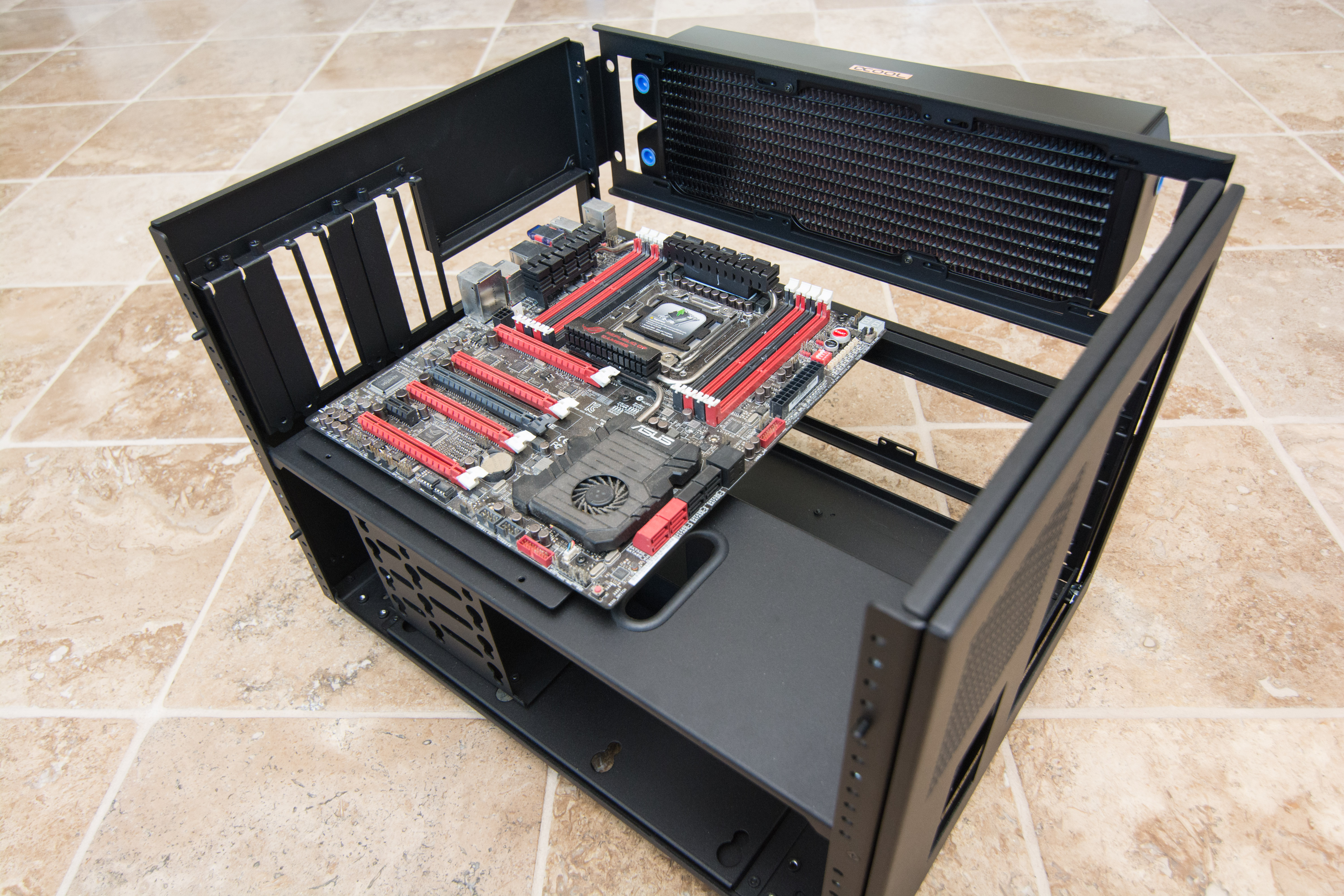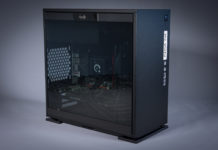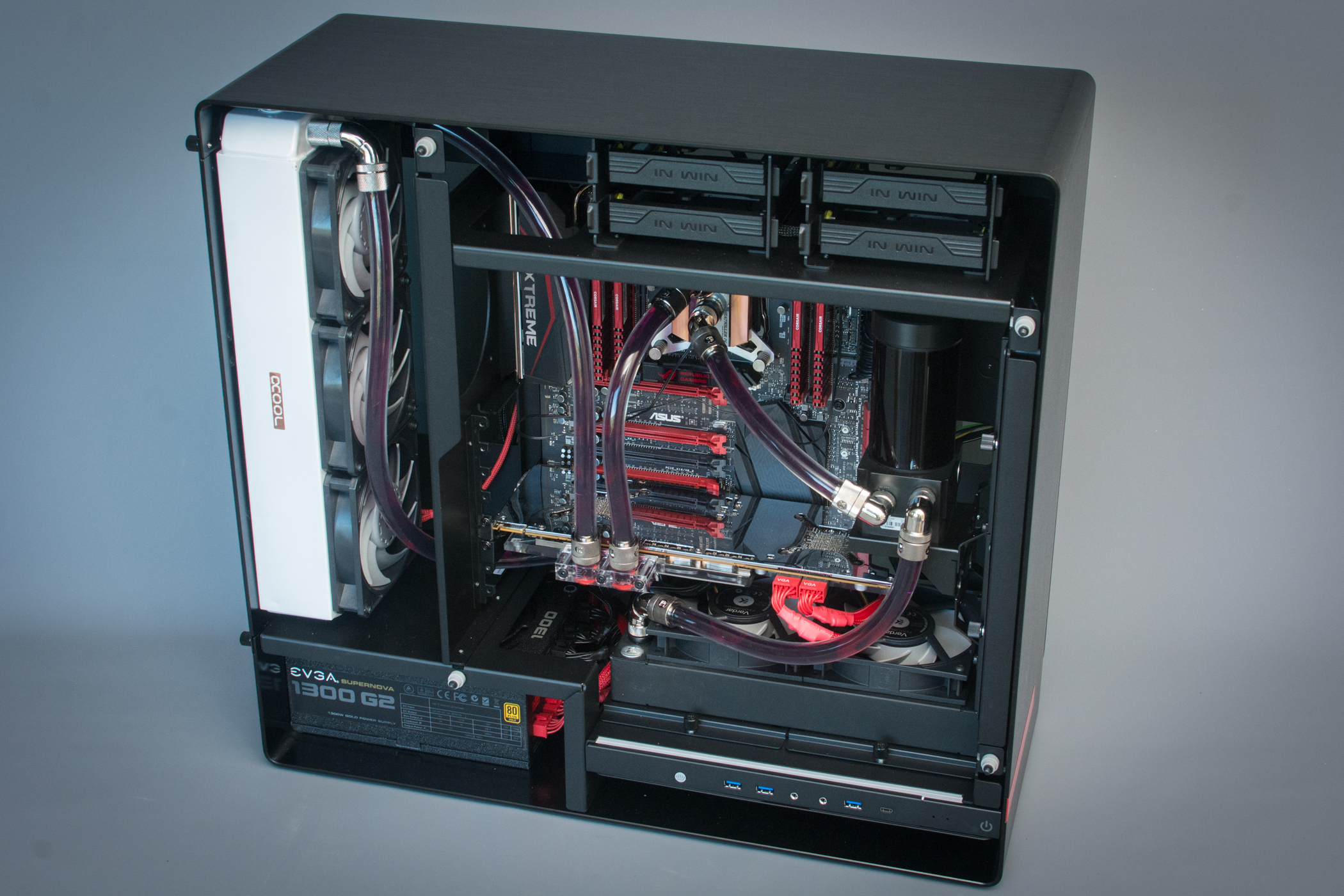Alright ladies and gentlemen – this is sort of a weird review because it’s sort of a weird offshoot product. The S8 Test Bench is a derivative of the Mercury S8 case, so if you haven’t read that review, I would read that first as it gives a good basis for what we’re going to talk about here. The S8 Test Bench uses the same internal structure as the full S8 case but it has a shorter front and back panel, and removes the top panel that braces the front and back:
This gives a very open and accessible motherboard tray which comes in regular ATX or SSI-CEB sizes. If you have a board like the popular Asus “eATX” size boards then you could use either. The ATX tray will have some motherboard overhang:
On the other hand the SSI-CEB tray will then be a good bit longer than the “eATX” board and doesn’t support the board any more than the ATX tray would. Here’s the SSI-CEB tray on the S8 case (not the test bench):
Like the S8 the motherboard tray is removable and like the S8 but unlike the Merlin/Magnum series the backplate does not also come with it, so GPUs must be unsecured from the back panel. This isn’t a big deal though as if you’re a frequent GPU changer you won’t bother to screw them in anyway and unlike some test benches the GPUs will get a decent amount of horizontal support without being screwed down:
The test bench of course uses the same motherboard tray as the S8 which allows you to mount hard drives and SSDs underneath the tray. We’d be tempted to not use this feature when using a test bench if hardware needs to be changed frequently so that the tray is not precariously balanced on top of your drives every time you take it out to change a component.
Of course the HDD mount panel on the tray removes with two thumbscrews within 20 seconds so it’s hardly a big deal. The front panel is about 120mm shorter than the S8 case, and now features a 120mm fan mount on the left side rather than the 240mm on the full S8 case. The flexbays on the right also shrink from 9 bays to 6 bays. 6 bays still means you can mount a 240 radiator though with the optional accessory.
This version of the Test Bench came with the front panel cutout too that can be fitted with power/reset switches and optional USB3 connectors. You can order the front panel without these (saving $15) and indeed in all my tech bench related setups I’ve never used seperate power/reset switches so if I was to configure this case myself I would save the money and not bother. Any decent board will have power/reset switches and if you’re using a test bench then getting access to the USB on the back of the board shouldn’t be a concern.
















